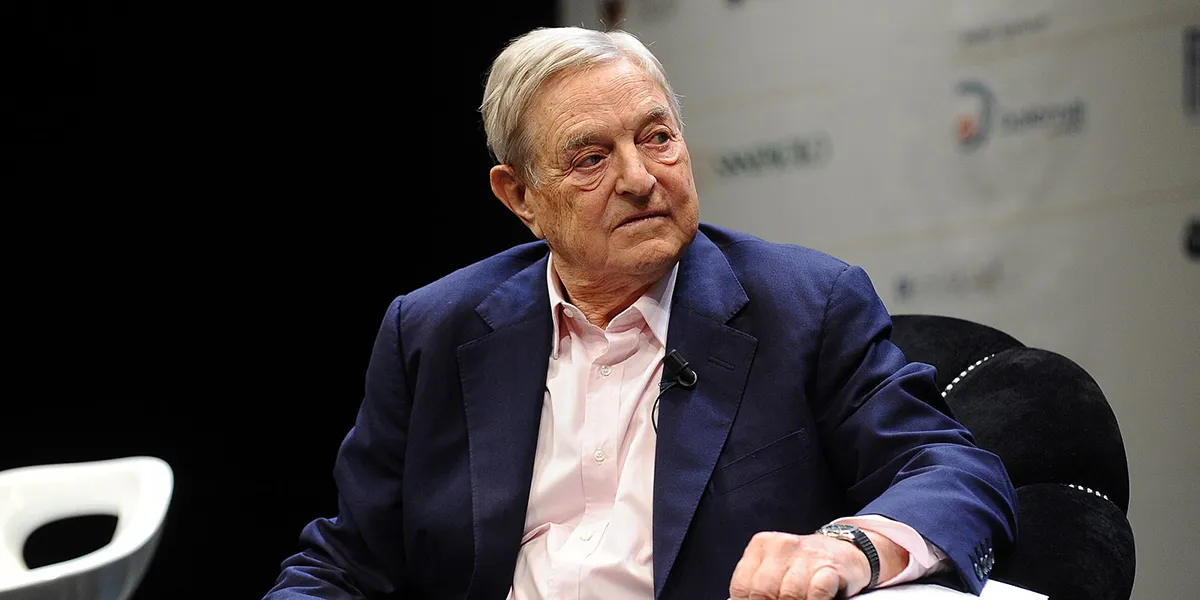Elections & Politics Policy Brief #200 | Morgan Davidson | 11/3/2025
Summary
The Trump administration has targeted George Soros and the Open Society Foundations (OSF) in its post-Kirk “crackdown” on what it calls radical left networks. Trump has floated the use of RICO charges, ordered agencies to scrutinize progressive donors and Non-Governmental Organizations (NGOs), and tied OSF to so-called organized political violence. OSF and other left-leaning groups have dismissed these moves as a politically motivated effort to silence dissent and restrict civil society.
In the weeks following the assassination of Charlie Kirk, the White House’s rhetoric hardened.
- Aug 27, 2025 – Trump publicly called for George and Alex Soros to face RICO charges, offering no evidence, an apparent act of political revenge after Fulton County DA Fani Willis pressed similar charges against Trump for his 2020 election actions in Georgia.
- Sept 22, 2025 – Trump signed an order designating Antifa as a domestic terrorist organization, framing it as a first step in a wider crackdown on leftist “support networks.”
- Sept 25, 2025 – The administration broadened its push against what it calls “organized political violence.” The Attorney General refused to confirm or deny investigations into OSF, stating only that “everything is on the table.” OSF responded by calling the move a politically motivated attack, and Reuters later confirmed the DOJ had provided no evidence connecting the foundation to extremist activity.
- Sept–Oct 2025 – Senior Trump allies, including J.D. Vance and Stephen Miller, explicitly named OSF as a target to be “dismantled.”
- Oct 9, 2025 – A Reuters deep dive revealed a multi-agency plan led by Miller to investigate liberal nonprofits and donors linked to OSF’s funding network.
These developments mark one of the administration’s most ambitious and symbolic efforts yet to tie democratic support to domestic terror.
Analysis
The Open Society Foundations have long been a fixture in global democracy and human rights work. Founded by George Soros, OSF operates through a network of regional foundations that support justice, education, civil rights, and government transparency. With an estimated $25 billion in assets and $1.2 billion in expenditures in 2024, the foundation funds thousands of projects worldwide, from court reform to media independence. Alex Soros now chairs the board, and Binaifer Nowrojee serves as president, continuing the network’s mission under a new generation of leadership.
What distinguishes OSF from many of the other groups targeted by the Trump administration, such as Antifa or grassroots protest movements, is its institutional scale and legitimacy. OSF’s work happens not in the streets but through grants, partnerships, and advocacy. Yet, this formality makes it visible and traceable, giving the administration a more tangible target than diffuse movements like Antifa.
On Sept 25, OSF released a statement calling the rumored investigations “politically motivated attacks designed to silence dissent.” Progressive NGOs, including the ACLU, echoed this concern, warning that the administration’s tactics threatened First Amendment protections and risked chilling the broader ecosystem of nonprofit advocacy.
Legal experts also note that U.S. law provides no mechanism to designate a domestic group as a terrorist organization. Trump’s earlier Antifa order, used as a model, lacks binding legal force, making any similar action against OSF largely symbolic and constitutionally fraught. Even so, the administration could still pressure OSF through informal levers such as IRS audits, financial scrutiny, subpoenas, or expansive RICO charges to achieve the same silencing effect.
At its core, the crackdown appears to be as much about political retribution as policy. Trump’s call for RICO charges against Soros and his son came after the same statute was used against him. The administration’s rhetoric, paired with its investigations into liberal donor networks, reveals a multi-front strategy, attacking grassroots activists (Antifa), legal advocates (ACLU), and financiers (OSF) to suppress opposition at all levels.
This attack extends beyond philanthropy: it connects to the President’s repeated attacks on the press as “fake news” and his administration’s influence in media mergers and acquisitions, including cases like Paramount. Taken together, these efforts outline a vision of political control in which speech, funding, and reporting are viewed as threats if they challenge the state.
As the administration moves forward, the feasibility of any legal case against OSF remains doubtful. But the symbolism, painting the largest liberal foundation in the world as an enemy of the state, carries lasting consequences. It signals to other donors that supporting democratic institutions and rights groups may invite federal scrutiny. If the administration is able to take down or significantly crack down on the OSF then who can stand? It reframes philanthropy as terror, and it deepens America’s already dangerous divide between power and opposition, turning democratic infrastructure into another front in the political wars.
Engagement Resources
- Reuters: Evaluating Trump’s plan to crackdown on “radical left” https://www.reuters.com/legal/government/trumps-war-left-inside-plan-investigate-liberal-groups-2025-10-09/?utm_source=chatgpt.com
- Open Society Foundations: Who We Are – Overview of OSF’s mission, grants, and leadership. https://www.opensocietyfoundations.org/who-we-are
- Ebsco: Who is George Soros? A research starter- https://www.ebsco.com/research-starters/biography/george-soros

